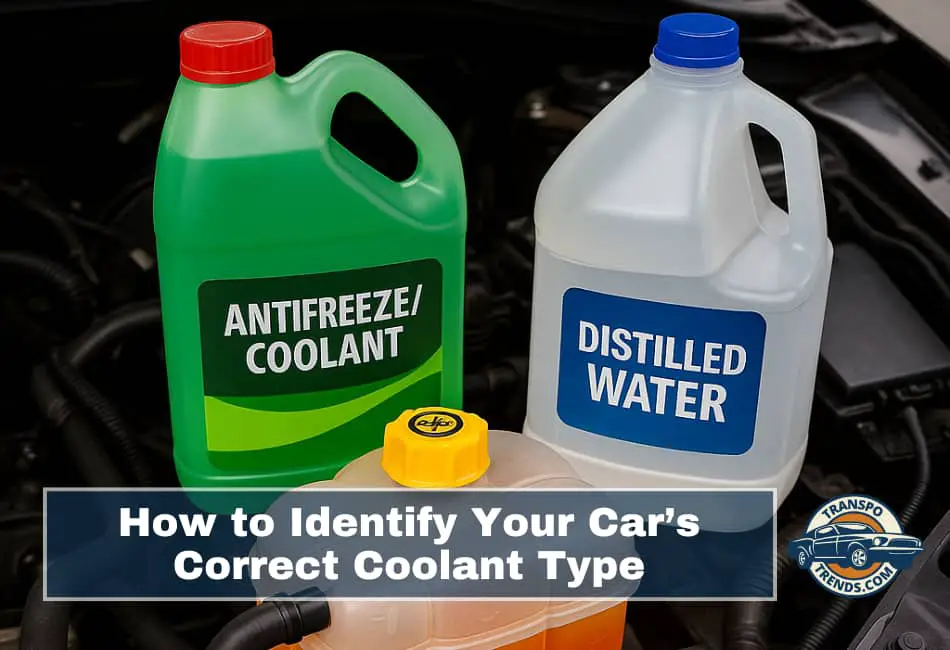Your car’s engine is an intricate machine that depends on precise fluid dynamics to operate efficiently. Among these fluids, coolant plays one of the most critical roles.
It helps regulate temperature, prevents freezing in winter, and shields metal components from corrosion. However, not all coolants are the same. Using the wrong type can cause long-term damage, clogs, or even engine failure.
This guide will help you understand the different coolant types, how to identify which one your vehicle needs, and why getting it right matters.
Why Using the Right Coolant Is Critical
Coolant is not just colored water. It is a carefully balanced chemical mixture of glycol, corrosion inhibitors, and sometimes silicates or organic acids.
It flows through your radiator, water pump, engine block, and heater core, managing engine temperature and keeping components from degrading.
When you use the wrong coolant, you risk chemical reactions that can form sludge, block narrow coolant passages, and erode metal surfaces.
Modern engines, especially those with aluminum parts, are particularly sensitive to coolant chemistry. A mismatch can lead to overheating, premature wear, and costly repairs.
Main Types of Coolant and What They Mean
Coolants fall into several broad categories. Their type is typically indicated by color, but color is not a guarantee of compatibility. Instead, focus on the chemistry and manufacturer recommendations.
| Coolant Type | Color | Lifespan | Description | Commonly Used In |
|---|---|---|---|---|
| IAT (Inorganic Additive Technology) | Green | ~2 years or 30,000 miles | Contains silicates and phosphates to prevent corrosion. | Older cars (pre-1998), especially American models with iron components. |
| OAT (Organic Acid Technology) | Orange | ~5 years or 150,000 miles | Silicate-free, uses organic acids for long-lasting protection. | GM, Saab, VW, and some Asian models. |
| HOAT (Hybrid Organic Acid Technology) | Yellow, Turquoise, Pink, Purple | ~5 years or 150,000 miles | Blends IAT and OAT features for longer life. | Ford, Chrysler, BMW, Tesla, Toyota, Honda, Hyundai. |
| Universal Coolant | Varies (Clear or Greenish) | Up to 300,000 miles | Designed to mix with any existing coolant type. | Any vehicle in emergency situations, but should be verified. |
Step-by-Step: How to Find the Right Coolant for Your Vehicle
1. Check the Owner’s Manual
The owner’s manual is your first and best source. It specifies the coolant type required by your engine and may list an ASTM standard or OEM-approved formulation.
For example, some Toyota models require P-HOAT coolants, while classic Fords may need traditional green IAT.
If you no longer have the manual, most car manufacturers provide digital versions online.
2. Look at the Coolant Reservoir or Cap
Many modern cars label the coolant reservoir or radiator cap with specific coolant type instructions. The label might include the formulation (e.g., OAT) or even a brand name.
You can also observe the coolant color, but this is not a foolproof method. A pink fluid might mean P-HOAT in a Toyota, or Si-OAT in a Mercedes. Use color as a secondary reference.
Ensure the engine is cool before opening the cap. Checking coolant when the engine is hot is dangerous and can cause burns.
3. Use a Coolant Tester
Coolant testers, available at auto stores like AutoZone, allow you to extract a sample and determine its pH, freeze protection level, and compatibility. This is especially useful for used vehicles with an unknown maintenance history.
Using a tester can help you avoid mixing incompatible coolants or continuing to use degraded fluid.
4. Ask a Mechanic or Dealer
If in doubt, get professional advice. Mechanics have tools to identify coolant formulations and can tell you what your system currently contains. Dealers can look up your VIN to provide factory-recommended specifications.
This is particularly important for luxury brands that use proprietary formulations.
5. Try a Trusted Online Tool
Websites such as Euro Car Parts or Prestone offer vehicle-specific coolant finders. By entering your vehicle’s make, model, and year, you can get a list of compatible products. Still, cross-reference this information with your manual for confirmation.
What to Do if You Are Unsure or Suspect a Mix-Up
Used cars or recent top-ups can complicate things. If you are unsure of what coolant is in your system:
- Do a Full Coolant Flush: This removes all the old coolant, preventing cross-contamination. Flush with distilled water or a specialized cleaner, then refill with the correct fluid.
- Use a Verified Universal Coolant: Brands like Prestone offer coolants labeled as universally compatible with all vehicle types. These are safe in most engines but always verify with the manufacturer if your engine has specific requirements.
- Do Not Mix Coolants: Mixing IAT and OAT coolants, for instance, can lead to sludge that clogs your radiator and passages. If a mix-up occurs, flush the system immediately.
Tips to Maintain a Healthy Cooling System
Maintaining your coolant is as important as choosing the right one. Follow these tips:
- Top-Up Carefully: Always use the same coolant formulation already in the system. If unsure, flush first.
- Monitor Levels Monthly: Check the reservoir and refill as needed. A sudden drop could indicate a leak.
- Flush Regularly: Replace coolant every 2 to 5 years depending on the formulation. Your owner’s manual will have an exact interval.
- Use Distilled Water: If diluting concentrated coolant, always use distilled water. Tap water can introduce minerals that corrode engine components.
- Watch for Warning Signs: Murky coolant, overheating, or steam from the hood may signal cooling system issues.
Summary: Matching Coolant Type to Vehicle Requirements
| Step | Action | Why It Matters |
| 1 | Check owner’s manual | Lists exact coolant specification and brand recommendation. |
| 2 | Observe coolant reservoir label | Gives a quick visual clue for formulation or OEM standard. |
| 3 | Use a coolant tester | Verifies chemical composition and coolant health. |
| 4 | Ask a mechanic or dealer | Ensures accuracy, especially for proprietary systems. |
| 5 | Use a trusted online tool | Offers vehicle-specific product recommendations. |
| 6 | Flush if uncertain | Prevents sludge from incompatible mixtures. |
| 7 | Avoid mixing types | Keeps corrosion inhibitors stable and system clean. |
| 8 | Stick to maintenance intervals | Extends engine life and prevents costly breakdowns. |

